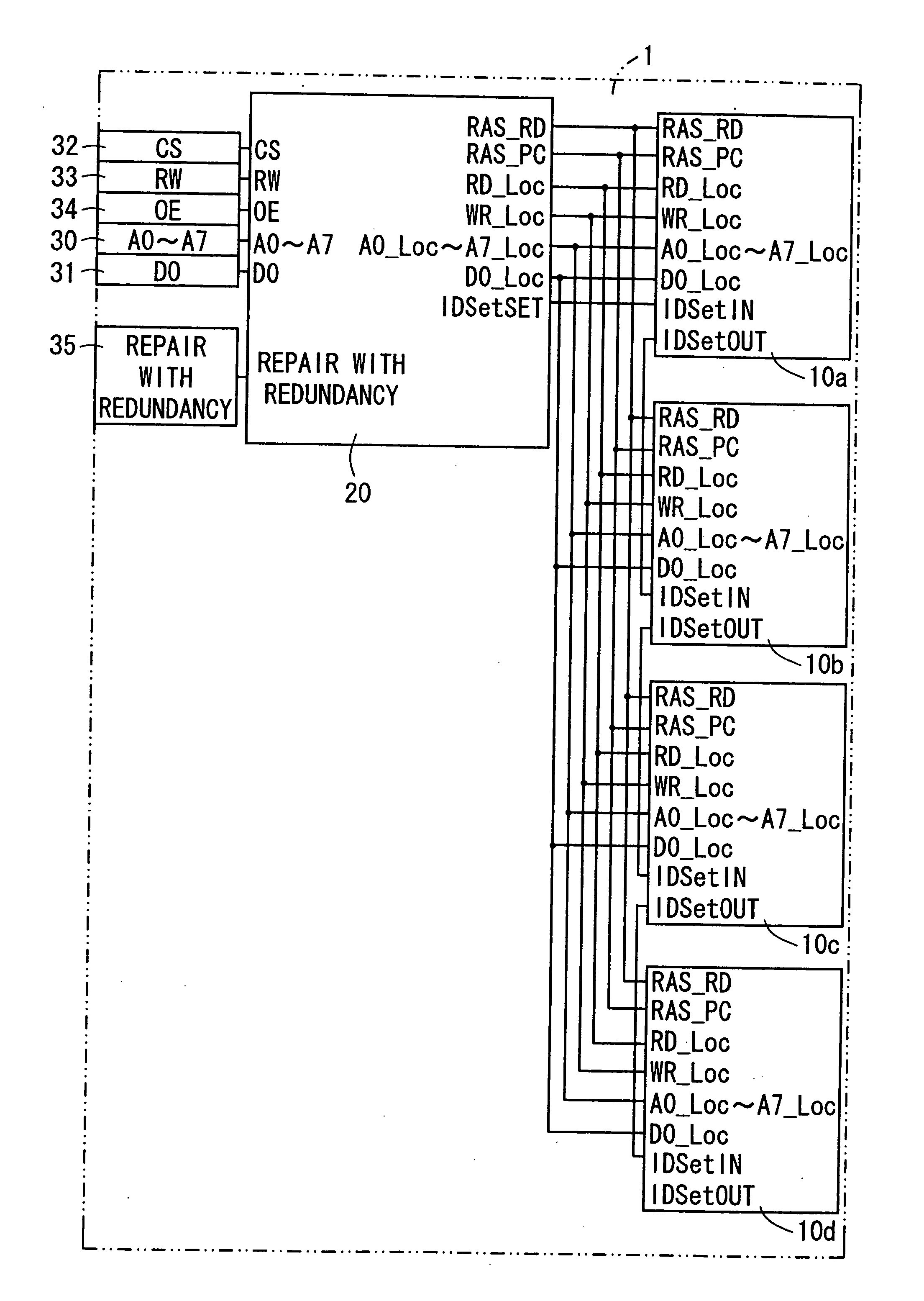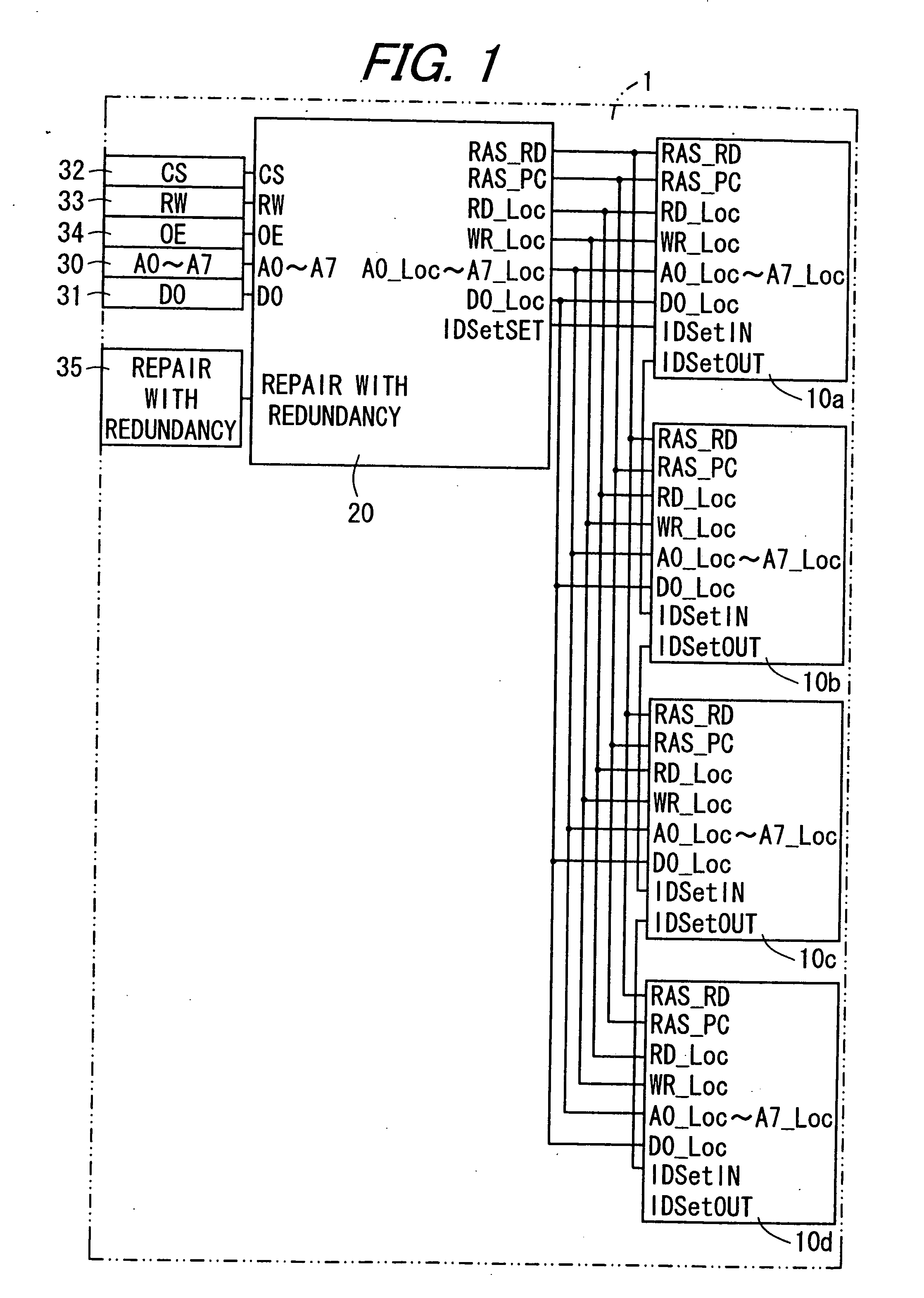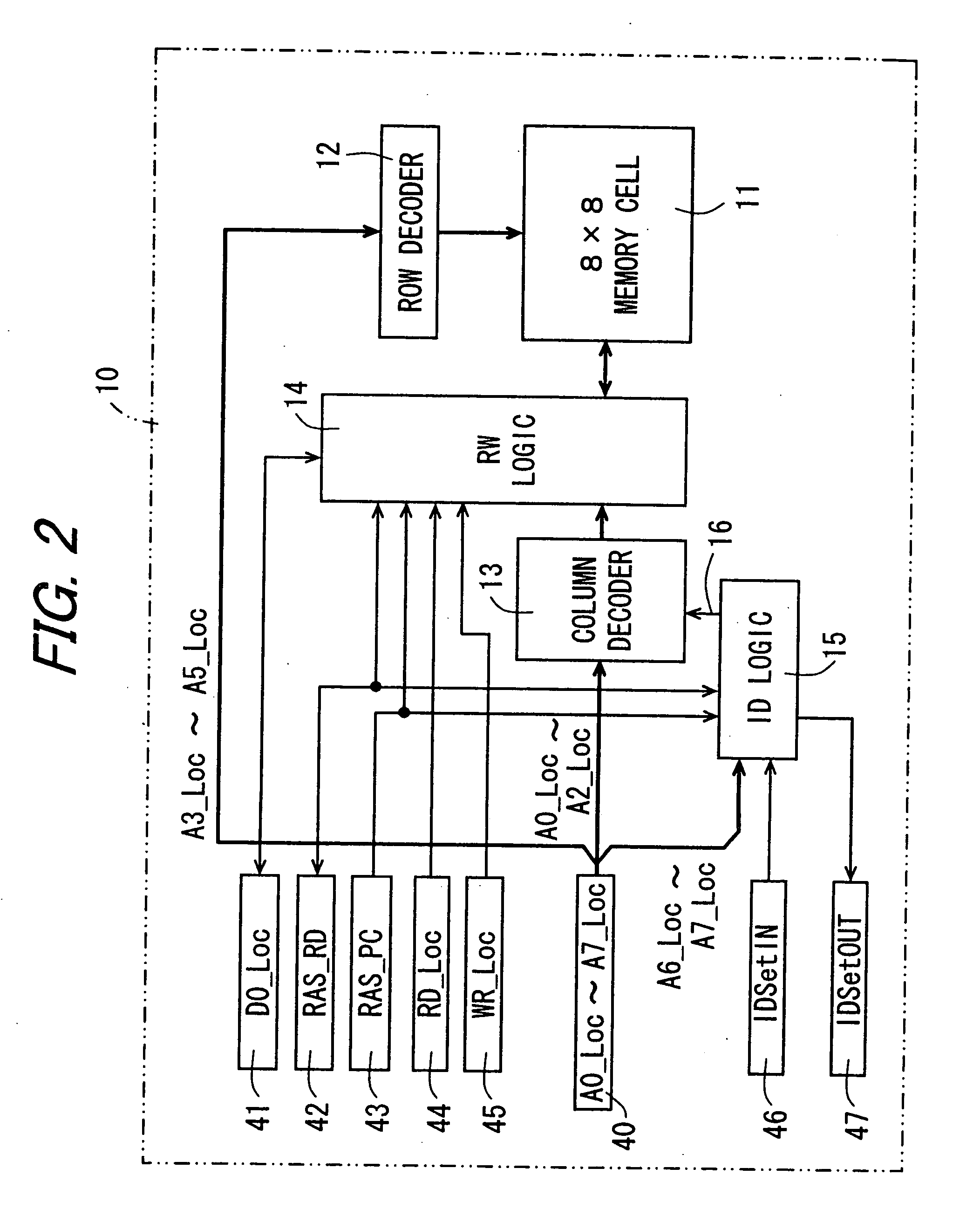Memory device
a memory chip and memory technology, applied in the field of memory devices, can solve the problems of reducing production yield, memory chip scrapping as a poor product, and unable to perform normal storage operation, and achieve the effect of reducing size and speed
- Summary
- Abstract
- Description
- Claims
- Application Information
AI Technical Summary
Benefits of technology
Problems solved by technology
Method used
Image
Examples
first embodiment
[0066]FIG. 1 is a diagram showing a circuit configuration of a memory device 1 in the invention. Storage is explained as a DRAM in scheme. The memory device 1 includes first memory chips 10a, 10b, 10c and 10d (hereinafter, sometimes collectively referred as a first memory chip 10), as a first memory mounting member, and a second memory chip 20, as a second memory mounting member.
[0067] The first memory chips 10a to 10d each have a memory cell as storage means for storing data, without having a redundant memory cell as redundant storage means for repairing an erroneous bit as a defect in the memory cell. Furthermore, a logic minimal in degree is solely provided to operate on a control logic as control means in the second memory chip.
[0068] The second memory chip 20 has a control logic as a logic for effecting memory control of the memory cells and the redundant memory cells, and a redundant memory cell for repairing an error bit of the first memory chips 10a to 10d. This control log...
second embodiment
[0086]FIG. 6 is a diagram showing a circuit configuration of a memory device 2 in the invention. The memory device 2 includes first memory chips 100a, 100b, 100c and 100d (hereinafter sometimes collectively referred as a first memory chip 100), as first memory carrier means, and a second memory chip 200, as second memory mounting member. The difference from the memory device 1 shown in FIG. 1 lies in an increase of signals CS0_Loc to CS3_Loc and IDSetCK at between the first memory chips 100a to 100d and the second memory chip 200.
[0087]FIG. 7 is a diagram showing a circuit configuration example of the first memory chip 100 shown in FIG. 6. The first memory chip 100 has a chip select terminal 49 which is chip select means allowing to select one out of the first memory chips. The same functional elements as those of the first memory chip shown in FIG. 2 are attached with the same references, to omit duplicated explanations.
[0088] An A0_Loc-A5_Loc terminal 400 is an address terminal. ...
PUM
 Login to View More
Login to View More Abstract
Description
Claims
Application Information
 Login to View More
Login to View More - R&D
- Intellectual Property
- Life Sciences
- Materials
- Tech Scout
- Unparalleled Data Quality
- Higher Quality Content
- 60% Fewer Hallucinations
Browse by: Latest US Patents, China's latest patents, Technical Efficacy Thesaurus, Application Domain, Technology Topic, Popular Technical Reports.
© 2025 PatSnap. All rights reserved.Legal|Privacy policy|Modern Slavery Act Transparency Statement|Sitemap|About US| Contact US: help@patsnap.com



